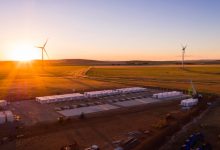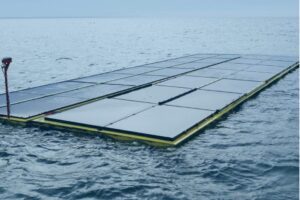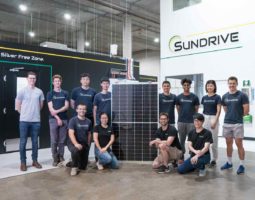South Australia’s record breaking streak for wind and solar generation over the past few months has shone the light over how a modern grid can run with little or no thermal or synchronous generation.
More importantly, it has also confirmed how the term “baseload” has become a redundant concept in a modern grid that is dominated by wind and solar and supported by storage and other so-called “dispatchable” generation.
“Baseload” has been the rallying cry of the fossil fuel and nuclear industries in their desperate attempts to protect their weakening position in the world’s grids. It’s never been a technical requirement, more a business model to protect equipment that doesn’t like to be turned off, even when there is no demand.
Some major utilities in Australia already concede that “baseload” is, or will soon be, a redundant concept in Australia, and South Australia is leading the way in showing a real example of how it can be done.
As RenewEconomy has reported on multiple occasions over the past few months, the share of wind and solar in South Australia has reached record and world-leading proportions, partially because the market operator, AEMO, has found a way to reduced the need to generate gas at the same time.
The commissioning of four synchronous condensers has provided an alternative source of “system strength”, meaning that very little gas generation is needed to keep the grid stable when wind and solar are providing more than 100 per ent of local demand, as they did for 93 hours straight in late November.
Battery storage will also be able to provide those crucial grid services, and AEMO has already canvassed the possibility that no gas at all will be needed in the South Australia grid at times over coming years.
As Hugh Saddler points out in his latest Australian Energy Emissions Monitor, now published via the ANU, these ground breaking achievements, and the low wholesale prices that accompanied them, leads to two conclusions.
“Firstly, having a high share of coal fired generation will not necessarily deliver lower prices,” Saddler writes.
“Secondly, modern electricity systems do not need high levels of local dispatchable generation, let alone so-called baseload generation, to deliver highly competitive wholesale prices, while also operating with complete security over extended periods.”
Saddler says the data also show the value of interconnections over a wider area – in this case between South Australia and Victoria – in reducing the cost of supply when local variable generation is at low levels. And the extreme price variability points to the importance of short and medium term storage.
But he also points to the value of load shifting, now a common concept being embraced by customers, as well as generators, even in off-grid renewable systems where load can be timed to match with the supply of wind and solar.
But that is one area where South Australia is just a little bit hamstrung, courtesy of some dumb decisions taken decades ago.
“While South Australia is providing an example to the rest of the country in how to transition to a zero emission electricity supply system, its residential off-peak storage electric water heaters provide an example of what not to do,” Saddler notes.
Unlike New South Wales and Queensland, for instance, South Australia cannot remotely control the timing of water heater switching, using ripple control. In South Australia, almost all systems are fitted with a pre-set time switch, and most of them switch on at 11 pm.
“On 28-29 November the water heaters came on when the spot wholesale price was around $65 per MWh,” Saddler writes.
“Had they been able to come on 12 hours earlier, the spot price would have been minus $35 per hour, to the potential benefit of both generators, which would have lost less money because the price would have risen somewhat, and consumers, because they were still receiving electricity at a zero of negative price.
“This stupidity is the long-lived legacy of bad decisions made by the electric utility management for short term cost saving reasons over sixty years ago. With so many decisions with long term consequences to be made over the next few years, it is to be hoped that long-term thinking prevails at all times.”
Update: The demise of baseload is confirmed by the Australian Energy Market Operator’s draft 2022 Integrated System Plan, which models the closure of all the grid’s coal fired generators within a decade or two, and the lack of space in the market for even “mid merit” gas generators.










